Fantax is a fictional superhero character from a French comic book series. He was created by writer "J.K. Melwyn-Nash" (aka Marcel Navarro) and artist "Chott" (aka Pierre Mouchot). The character was created in 1946 as part of the post-war revival of Mouchot's publishing company.
Fantax was the alter-ego of Lord Horace Neighbour, a British diplomat assigned to the United States. Fantax did not have any super powers but was an exceptional athlete and skilled detective. His costume consisted of a half-hood, a cape, and a shirt emblazoned with a large "F". Neighbour also disguised his personality; being sophisticated as Lord Neighbour and street tough as Fantax.
Neighbour was assisted in his crime fighting by Barbara, his fiancée and later wife; Murph, his butler; P'tit Louis, a muscular assistant; and eventually his children, Horace Junior and Barbara. Horace Junior later became the lead in his own series as Black Boy, first as an independent crime fighter and later as an FBI agent. Mouchot also planned on having Barbara lead her own series in the character of Barbara Tiger but this series never materialized.
The series began as a short lived comic strip in 1946. It was soon moved to a comic book series in July 1946. Navarro left the series in 1948 in a dispute over ownership of the character. The series was then written by Mouchot, Robert Rocca or Rémy Bordelet. A new French censorship law enacted in July 1949 forced Mouchot to discontinue publishing the comic book. The character was moved to text stories in a magazine format, but this only lasted six issues. Five issues of a new comic book title, The New Adventures of Lord Horace Neighbour were published in 1950. In 1955, Mouchot launched the Black Boy comic book series (some of which was reused material from the earlier Fantax books) and revived Fantax as a comic book series in 1959. Mouchot was prosecuted by the government censorship board for the violent content of his comic books from 1955 until he was driven into bankruptcy in 1961.

Dick Tracy is an American comic strip featuring Dick Tracy, a tough and intelligent police detective created by Chester Gould. It made its debut on Sunday, October 4, 1931, in the Detroit Mirror, and it was distributed by the Chicago Tribune New York News Syndicate. Gould wrote and drew the strip until 1977, and various artists and writers have continued it. Dick Tracy has also been the hero in a number of films, including Dick Tracy in which Warren Beatty played the lead in 1990. Tom De Haven praised Gould's Dick Tracy as an "outrageously funny American Gothic", while Brian Walker described it as a "ghoulishly entertaining creation" which had "gripping stories filled with violence and pathos".
Entertaining Comics, more commonly known as EC Comics, was an American publisher of comic books, which specialized in horror fiction, crime fiction, satire, military fiction, dark fantasy, and science fiction from the 1940s through the mid-1950s, notably the Tales from the Crypt series. Initially, EC was owned by Maxwell Gaines and specialized in educational and child-oriented stories. After Max Gaines' death in a boating accident in 1947, his son William Gaines took over the company and began to print more mature stories, delving into genres of horror, war, fantasy, science-fiction, adventure, and others. Noted for their high quality and shock endings, these stories were also unique in their socially conscious, progressive themes that anticipated the Civil Rights Movement and dawn of 1960s counterculture. In 1954–55, censorship pressures prompted it to concentrate on the humor magazine Mad, leading to the company's greatest and most enduring success. Consequently, by 1956, the company ceased publishing all of its comic lines except Mad.
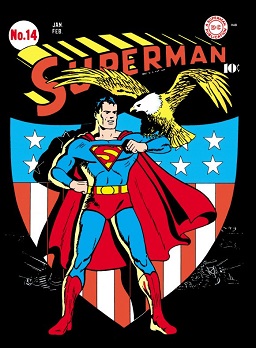
The Golden Age of Comic Books describes an era of American comic books from 1938 to 1956. During this time, modern comic books were first published and rapidly increased in popularity. The superhero archetype was created and many well-known characters were introduced, including Superman, Batman, Robin, Captain Marvel, Captain America, and Wonder Woman.
Disney comics are comic books and comic strips featuring characters created by the Walt Disney Company, including Mickey Mouse, Donald Duck and Uncle Scrooge.
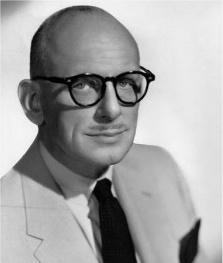
Lev Gleason Publications, founded by Leverett Stone Gleason (1898–1971), was the publisher of a number of popular comic books during the 1940s and early 1950s, including Daredevil Comics, Crime Does Not Pay, and Boy Comics.

Charles Biro was an American comic book creator and cartoonist. He is today chiefly known for creating the comic book characters Airboy and Steel Sterling, and for his work at Lev Gleason Publications on Daredevil Comics and Crime Does Not Pay.
Editions Lug was a French comic book publisher created in 1950 by writer/editor Marcel Navarro and businessman Auguste Vistel.

Pep Comics is the name of an American comic book anthology series published by the Archie Comics predecessor MLJ Magazines Inc. during the 1930s and 1940s period known as the Golden Age of Comic Books. The title continued under the Archie Comics imprint for a total of 411 issues until March 1987.

Tarzanesque is a term created by Frenchman Francis Lacassin used to describe characters in comic books inspired by Tarzan. A tarzanesque character resembles Tarzan in his physical resourcefulness, within a line of action that includes an adventurous life in the jungle, the gift of understanding and being understood by animals, contact with lost civilizations and courage combined with the ability to deal with nature. The creation of such characters may have been propitiated by the success that Tarzan had achieved since his appearance in literature in 1912, culminating with the release of daily comic strips in 1929, which paved the way for a genre that combined the allure of the unknown environment, the need for the archetypal characteristics of the hero and the popularity of access.
The Eastern Color Printing Company was a company that published comic books, beginning in 1933. At first, it was only newspaper comic strip reprints, but later on, original material was published. Eastern Color Printing was incorporated in 1928, and soon became successful by printing color newspaper sections for several New England and New York papers. Eastern is most notable for its production of Funnies on Parade and Famous Funnies, two publications that gave birth to the American comic book industry.
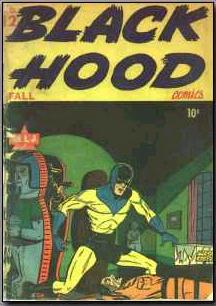
Black Hood Comics was the name of an American anthology comic book series published by MLJ Magazines Inc., more commonly known as MLJ Comics, for eleven issues between Winter 1943 and Summer 1946. The series featured MLJs costumed hero Black Hood, and "Boy Buddies", featuring Shield's partner 'Dusty the Boy Detective' and Wizard's side-kick 'Roy the Superboy', together with humor strips.
Ace Magazines was a comic book and pulp-magazine publishing company headed by Aaron A. Wyn and his wife Rose Wyn. The Wyns had been publishing pulp fiction under the Periodical House and A. A. Wyn's Magazine Publishers names since 1928, and published comics between 1940 and the end of 1956.

Magazine Enterprises was an American comic book company lasting from 1943 to 1958, which published primarily Western, humor, crime, adventure, and children's comics, with virtually no superheroes. It was founded by Vin Sullivan, an editor at Columbia Comics and before that the editor at National Allied Publications, the future DC Comics.
Notable events of 1946 in comics. See also List of years in comics.
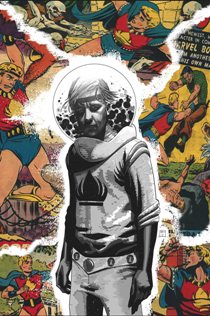
Marvel Boy, also known as The Uranian, is a fictional superhero appearing in American comic books published by Marvel Comics. The character is one of several to use the name "Marvel Boy". He was created by writer-editor Stan Lee and artist Russ Heath, and first appeared in Marvel Boy #1.
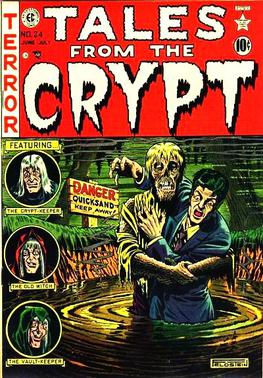
Horror comics are comic books, graphic novels, black-and-white comics magazines, and manga focusing on horror fiction. In the US market, horror comic books reached a peak in the late 1940s through the mid-1950s, when concern over content and the imposition of the self-censorship Comics Code Authority contributed to the demise of many titles and the toning down of others. Black-and-white horror-comics magazines, which did not fall under the Code, flourished from the mid-1960s through the early 1980s from a variety of publishers. Mainstream American color comic books experienced a horror resurgence in the 1970s, following a loosening of the Code. While the genre has had greater and lesser periods of popularity, it occupies a firm niche in comics as of the 2010s.
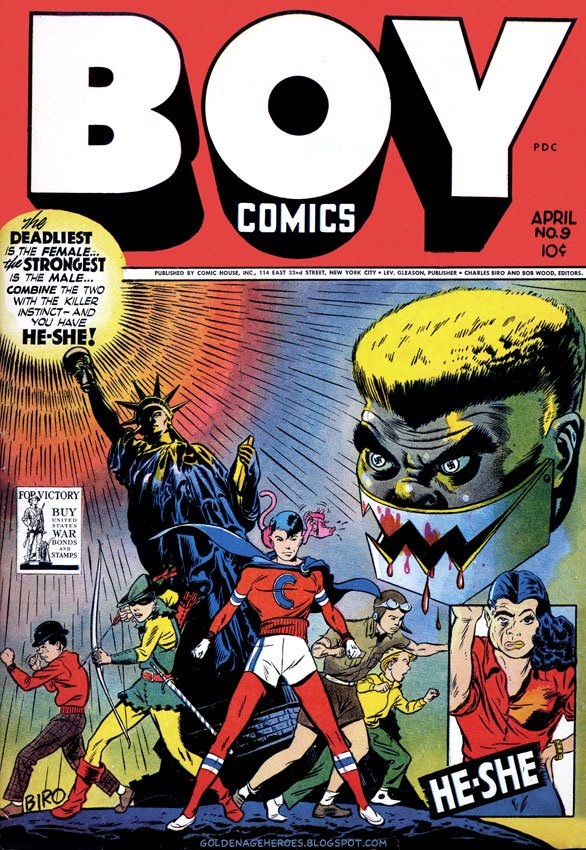
Crimebuster is a fictional boy hero, appearing as the lead feature in Boy Comics in the 1940s and 1950s. Dressed in a hockey uniform and cape, and accompanied by a performing monkey named Squeeks, he fights crime to avenge his parents' deaths. He is described by Joe Brancetelli in The World Encyclopedia of Comics as "a hero, yes, but first a boy... arguably the best-handled boy's adventure feature ever to appear in comics." Some sources credit the character solely to Charles Biro; others co-credit Bob Wood, co-credited on the first cover of the new Boy Comics title.
Ann Brewster was an American cartoonist and illustrator during the Golden Age of comics. She provided art for many different publishers, including Ace Magazines, Fiction House, and Atlas Comics. Brewster is most notable for illustrating romance comics. After a career as penciller and inker for comics, she transitioned to illustrating novels and children's magazines before retiring in 1980.